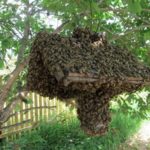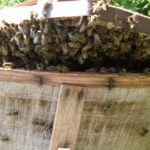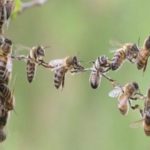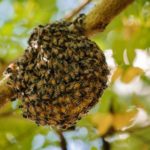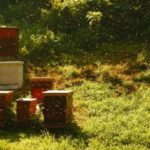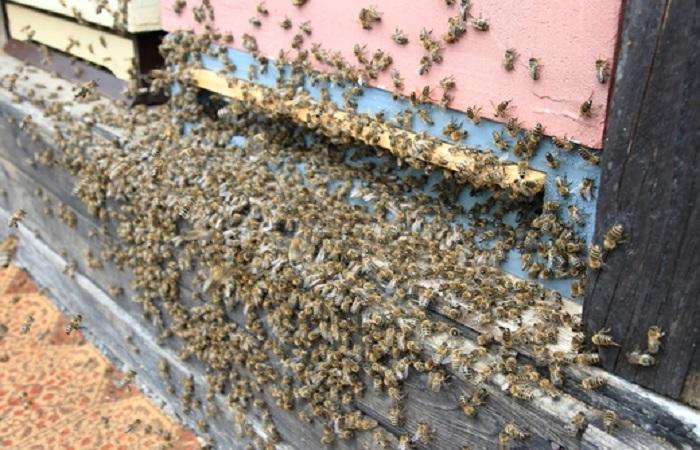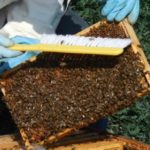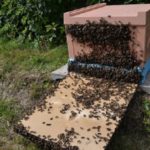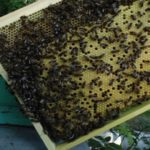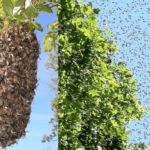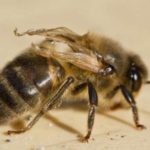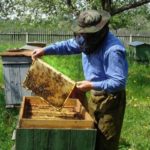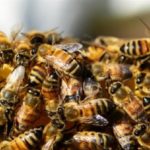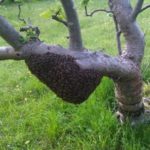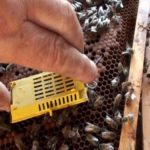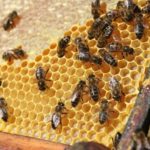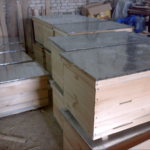To increase apiary productivity, beekeepers use various methods to increase bee colonies. These methods also include artificial swarming, which allows you to significantly expand the apiary and bring out new bees ready to collect nectar. We will talk in detail about the correct choice of methods and timing of reproduction of hardworking insects below.
What is swarming?
The natural process of swarming bees occurs when the nest is overcrowded, and it is undesirable for beekeepers.
The main reasons causing swarming:
- overheating of the hive due to weather and climatic factors;
- offspring too large;
- the old queen of the family;
- small hive with poor ventilation;
- the queen does not produce a sufficient amount of secretion, which contributes to the increase in the number of drones.
To prevent uncontrolled reproduction of insects, the following measures are taken:
- at the first signs of swarming, it is necessary to expand the living space of the hive;
- to obtain healthy offspring, the brood should be located in the central part of the house;
- the nest must not be overheated by the sun's rays;
- if necessary, you need to feed your family;
- In hot weather and drought, the hives are ventilated.
During an uncontrolled process, the nest is transformed, which negatively affects the collection of nectar and the brood of insects. Also, overpopulation of the hive increases the risk of developing various diseases and attacks by harmful parasites.
Important! Artificial swarming occurs under the strict guidance of the beekeeper, who himself chooses the timing of the beginning of the separation of families and their number.
Specifics of artificial swarming
To increase the number of insects in the apiary, the beekeeper separates young insects and brood from a strong swarm, which themselves will breed a queen for a new hive. In this case, the swarming process will take place without searching for the queen, and the insects will work tirelessly from the moment the new nest is formed.
You can also be puzzled in advance, and by the time the hive is resettled, purchase a queen from the nursery.
In order for the process of increasing the apiary to be painless for the beekeeper and insects, the following rules must be followed:
- Only young bees from strong and large families are selected for swarming;
- work is carried out 30-40 days before the onset of flowering of honey plants, otherwise the new family will not be able to be active in collecting nectar.
Important! The timing of swarming of a bee colony is chosen based on the weather conditions of the region and the flowering of honey plants in the area.
Basic techniques
There are several ways to plan an apiary increase. The work is carried out in the spring or early summer, before the active bribe period begins. In regions with long autumns and warm winters, the swarming procedure can be carried out after the end of flowering of honey plants.
- The division of a healthy and strong colony is carried out during the day, when the bulk of the working insects are outside the hive. A new hive is brought to the house and part of the frames with brood, queen, honey and beebread are transferred into it. The old and new hive are placed at the same distance from the previous location. Upon arrival, the bees themselves will be distributed among the houses.
- When creating offspring, young individuals are separated into a separate family.
- The method of swarming by attacking the queen is justified in the case of a very strong colony with many worker and flying bees. To do this, remove the frame with the queen and clutch from the nest and transfer it to a new house, which is installed in place of the old hive. The old house, in which only young bees remain, is taken to a remote corner of the apiary and an additional queen is placed in it.
Important! Each of the methods of propagating bee colonies will help to avoid uncontrolled swarming of insects.
Taranov's method
It is impossible to predict the timing of the natural swarming of a bee colony, but it is quite possible to prepare for the process. With this approach, the famous scientist and beekeeping specialist G.F. Taranov invented his own technique that prevents undesirable consequences from unscheduled swarming of bees.
Step-by-step instructions for processing a hive:
- using smoke, the entrance hole to the hive and the upper part of the frames are fumigated;
- under the influence of smoke, insects fall into a half-asleep state;
- install plywood in front of the hive so that one end rests on the ground and the other does not reach 10 cm from the landing board;
- the cage with the queen is suspended under the arrival board;
- a large piece of light cloth is spread on the ground, into which all the bees from the hive are swept away;
- the insects will crawl to the entrance and gather in a swarm around their queen, but the worker insects will then go into the nest, and the young individuals will remain with the queen.
Important! Upon completion of the work, both families need additional feeding with honey and beebread.
Layering formation
To divide the bee colony and quickly obtain additional workers to collect nectar, experienced beekeepers carry out artificial swarming using the layering method.
To do this, young individuals are placed in a separate hive along with brood and transferred to another place. After adaptation, a queen cell or queen is placed into the hive to create a separate family.

